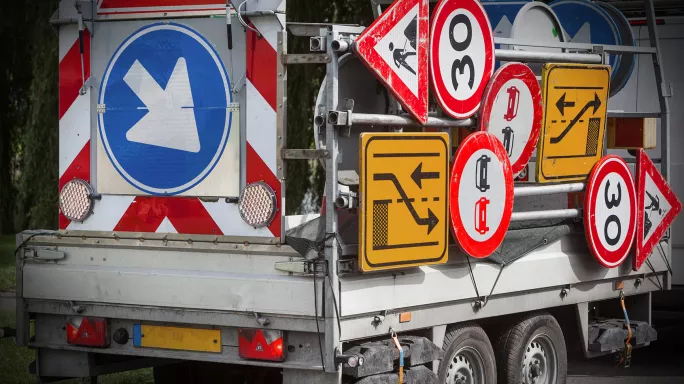
- Home
- Teaching & Learning
- General
- The evolution of ŌĆśno excusesŌĆÖ behaviour approaches
The evolution of ŌĆśno excusesŌĆÖ behaviour approaches

When Vanderbilt University sociologist Joanne Golann arrived at ŌĆ£Dream AcademyŌĆØ, her pseudonym for a US urban charter school, back in the early 2010s, she witnessed a behaviour management system that many in schools worldwide would say tilted towards the severe.
Hallways were completely silent between classes. Students received detentions for minor infractions, like putting their head on their desk, and started off the year seated on the floor, until they ŌĆ£earnedŌĆØ the right to sit in a chair. (She detailed this experience in her 2021 book Scripting the Moves: Culture and Control in a No-Excuses Charter School.)
According to Golann, Dream Academy students were constantly handed behavioural consequences, including detentions and suspensions, in an effort to improve their academic performance. senior fellow Robert Pondiscio pointed out that Dream AcademyŌĆÖs 250 students received 15,423 infractions in a single school year, ŌĆ£ŌĆØ.
School behaviour approaches
Versions of this approach to behaviour management - grouped under the umbrella term ŌĆ£no excusesŌĆØ - have spread globally in the time since GolannŌĆÖs visit. The belief in ŌĆ£sweat the small stuffŌĆØ-style discipline is driven by the idea that there is no detail of a childŌĆÖs appearance or behaviour too insignificant to enforce or correct in service to academic achievement. This would, those using it believed, help at-risk students to stay in school and achieve.
This stance had critics from the start. Researchers have suggested that punishments for small infractions involving haircuts, uniforms and forgetting notebooks or pens - especially among racial minorities, students with special educational needs or disabilities (SEND) and disadvantaged populations - might be doing more long-term harm than good.
For example, students with suspension records are more likely to fail their exams and more likely to be academically behind their peers, researchers say. They are also more likely to be students with SEND.
ŌĆ£Advocates say no excuses discipline is needed because you clamp these kids down in a strong routine and stop them from getting in trouble,ŌĆØ says Linda Graham, director of the , in Queensland, Australia - who has been a long-term critic of no excuses behaviour policies.
ŌĆ£My issue is not with having strong routines. Strong routines can benefit kids who lack routines of their own. My issue is with how they are enforced,ŌĆØ she adds.
Broken Windows Theory
The no excuses-style discipline approach is widely considered to have its ideological basis in , generated by two Harvard police researchers in the 1980s.
They argued that neighbourhoods with fewer signs of small-scale chaos and disorder - like no trash on pavements or no broken windows - made residents feel safer and appeared to help discourage larger disorders like crime.

Something similar was possible in classrooms, some US charter schools theorised at the turn of the new century.
If schools could control small infractions of misbehaviour and neglect, like uniform infractions and small acts of disobedience for students who attended chaotic schools, while eliminating the possibility of future disorder from places like crowded hallways and lunchrooms, it might launch a positive feedback loop where students could concentrate on academics. Achievement followed order.
US charter schools
Many US charter school networks like , and embraced this style of behaviour management in the early part of the 2000s, followed quickly by many in the English free schools movement.
There were silent hallways and lunchrooms. Students were given specific routines for exactly how to behave in class through practices like Slant, which stands for sit up, lean forward, ask and answer questions, nod your head and track the speaker.
Academic performance for students in these schools seemed to improve.
A of US charter schools performed by the Center for Research on Education Outcomes at Stanford University found that urban charter schools significantly outperformed their neighbourhood peers in both reading and maths, with the biggest gains for Black, Hispanic and low-income students.
A of English free schools performed in 2024 also found academic improvement, though positive results, researchers reported, were more modest.
Yet has discredited much of the Broken Windows Theory. Meanwhile, in the post-pandemic world, behaviour challenges are rising not reducing, according to teachers and .
So, how are those no excuses approaches faring in schools now?
Behaviour research
ItŌĆÖs hard to know because there is a high degree of variability of approaches between those who say they are no excuses alongside a lot of mythology around the movement (factors that make isolating behaviour approaches a major factor in academic achievement in the above research also tricky).
One myth, for example, is that many critics say the ŌĆ£excusesŌĆØ in no excuses applies to the children. Actually, according to US charter schools and many English advocates, the ŌĆ£excusesŌĆØ in no excuses refers to the adults, a reminder that there are no excuses for not helping even the most disadvantaged children reach academic success.
Meanwhile, research into the spread of the approaches - or the nature of the individual versions - is also difficult because itŌĆÖs hard to tell exactly how many schools are using a no excuses approach, says Alex Quigley, head of content and engagement at the , which performs research on schools and student learning.
ŌĆ£ThereŌĆÖs no kind of count in terms of more schools taking this approach than before because we donŌĆÖt have any way of knowing,ŌĆØ Quigley says.
Exclusions and suspensions
Yet despite these issues, some researchers say they have found that certain types of disciplinary practices used by some no excuses charter schools can have negative consequences that often contradict the goals they have for studentsŌĆÖ success.
When State University of New York, Albany, researcher Mary Ellen Stitt disciplinary practices in New Orleans, Louisiana, charter schools nearly a decade ago, she found that one-third of charters in the area were using some form of the no excuses approach, with the ultimate goal of improving test scores.
Black students made up 60 per cent of the enrolment of no excuses schools - and those students were also twice as likely as white students to be suspended for disciplinary infractions.
Test scores tended to be higher in the no excuses schools, Stitt says, but they also had higher suspension rates normally associated with lower academic performance.
Driver for outcomes
ŌĆ£[So] we donŌĆÖt know whether these kinds of discipline have any kind of positive effects on test scores,ŌĆØ Stitt says. ŌĆ£What we do know from this study is that theyŌĆÖre associated with higher levels of suspension, and we do know that high levels of suspension have negative impacts on test scores. So it could be that thereŌĆÖs a confounding factor there - that the academic improvements may be coming from something else we donŌĆÖt know.ŌĆØ

Research from the Broken Windows policing space, Stitt continues, suggests that Black residents were more likely to be perceived as ŌĆ£disorderlyŌĆØ compared with white residents, which meant they were more likely to be targeted for punishment. Her research results suggest something similar might be happening to students in schools.
Much of the research in the UK deals with the impact of suspension and exclusion, rather than no excuses policies in isolation.
Negative associations with exclusion
In one 2024 report from the , researchers found that students with multiple suspensions in secondary school were more likely to have SEND - specifically social, emotional or mental health needs - and were more likely to fail their GCSE exams in both reading and math.
Even students with one suspension were, on average, ŌĆ£not achieving a standard pass in GCSE English and mathsŌĆØ.
In a , Education Policy Institute researchers also found an ŌĆ£employment gapŌĆØ for students who had been suspended in secondary school. Early adult outcomes are much poorer for these students, including being or in higher education or training, and more likely to be receiving out-of-work benefits.
Do higher suspension rates in some no excuses schools create a larger group who experience the ill effects of suspension on long-term outcomes, compared with other schools, though? That research doesnŌĆÖt seem to have been done yet.
In the short-term, that high suspension rates donŌĆÖt negatively affect the larger body of studentsŌĆÖ ŌĆ£well-adjustednessŌĆØ, but again a considerable amount of that research just hasnŌĆÖt been done yet either.
Changing approaches
Even in the absence of evidence, many US charters have been through reform of some of the most extreme disciplinary practices, moving away from ŌĆ£Broken WindowsŌĆØ-style behaviour management and cultures of compliance of the early 2000s, and moving more toward what they call a more balanced approach.
In 2020, after the murder of George Floyd, schools began to re-think how they handled behaviour at school. Some, like KIPP, have .
In response to these changes, some charters in the US are issuing behaviour policies that are post-no excuses, ones that promise more compassion and flexibility for students and families while still trying to hold students to the high standards of behaviour that allow for both safety and focus on academics.
In England, some who took inspiration from charter schools say they were always implementing behaviour approaches in a more flexible way than their peers in the US.
Flexible behaviour management
ŌĆ£ItŌĆÖs important that you do sweat the small stuff,ŌĆØ explains Luke Sparkes, trust leader at Dixons Academies Trust, ŌĆ£so we can be flexible for the children who need it.ŌĆØ
Behaviour management at Dixons was inspired in part by US charter schools in places like New Orleans; Sparkes says that the school day is about learning, and structure and routines help by making the school ŌĆ£predictable and safeŌĆØ for students.
Students are explicitly taught expectations, and supported to help meet them. Clear sanctions are delivered if students violate their six main rules, which include being on time, wearing the proper uniform, staying on task and responding positively to adults and other students.
But the trust says it promotes student autonomy and remains more flexible in other areas like upper school uniforms, haircuts and henna.
Routines and resources
When parents complain on social media about draconian bathroom practices, Sparkes continues, it never seems complicated when thinking about it being just one child asking to go, but keeping children safe becomes challenging with lots of children out of lessons unsupervised.
Clear expectations with routines and resources built around these can keep children safe, he says.

Most importantly, DixonsŌĆÖ leaders and educators invest time in communicating with students about why strict rules and routines exist, he states.
ŌĆ£There has to be a ŌĆśwhyŌĆÖ behind everything - itŌĆÖs purpose, not power. People think you canŌĆÖt have both joy and rigour,ŌĆØ says Sparkes. ŌĆ£But itŌĆÖs not an either/or, itŌĆÖs a lot more nuanced. Structure liberates.ŌĆØ
Finding the behaviour balance
At the Mercia Learning Trust, consisting of seven schools in south Sheffield with high academic success rates, the school says behaviour standards are also high but flexible.
Students can receive a sanction, such as a 20-minute detention, for not having their materials at the start of class, or not finishing their homework. But leaders say the high-structure environment actually prevents punishments with more serious consequences, like suspensions.
ŌĆ£WeŌĆÖve got the highest attendance in the city and really high success rates academically,ŌĆØ says Mercia CEO Neil Miley. ŌĆ£But weŌĆÖve got the second lowest suspension rate in the city as well.ŌĆØ
Mercia schools are generally keeping suspensions low, Miley explains, due to a high level of student support. Teachers go over expectations with students often, explaining the why and also providing ladders of support so students can get there.
Scaffolded support
ŌĆ£Some children who are struggling to meet expectations need the additional support to be able to make it,ŌĆØ says Miley. ŌĆ£It canŌĆÖt always be clear cut to apply the exact same consequence to every child in every situation. However, there is always a form of consequence paired with support, ensuring that all children are given the opportunity to improve and get it right next time.ŌĆØ
Scaffolding is a key part of any behaviour approach, argues Graham, as the students who struggle with behaviour expectations are often children with disabilities and mental health or emotional struggles.
But she believes school leaders need to take a closer look at instructional practices to help those students, rather than disciplinary ones.
She advocates for teachers to follow closely the research on how children learn, especially those who struggle with academics. that students who struggle with reading, for example, find behaviour expectations difficult as well.
No clear solution
Graham says: ŌĆ£ItŌĆÖs not simply about rules and routines. ItŌĆÖs also about the teacher teaching in [certain] ways - for example, not teaching too fast, not using developmentally inappropriate vocabulary, using intentional pauses to support informational processing. These are the things we should be promoting in a productive sense, not in a repressive, disciplinary sense.ŌĆØ
Despite the polarised rhetoric around approaches to behaviour then, this a hugely nuanced area. What unites both critics of and advocates for stricter behaviour policies is wanting to keep children safe, but the reality is that the research simply canŌĆÖt tell us yet which side may be right in how to do that most effectively both in the short- and long-term: and due to the variation in approaches, perhaps it never will.
Ultimately, it will likely be parents - and thus, eventually, politicians - who decide what behaviour policies look like in schools, not the schools themselves - as they will vote with their admissions choices and their use of complaints processes. The problem there, of course, is that parents donŌĆÖt tend to agree either: some want a no excuses style approach, and some donŌĆÖt.
As such, as Quigley says, the vast majority of schools hedge their bets.
ŌĆ£I think most schools are somewhere in the middle,ŌĆØ he concludes. ŌĆ£They donŌĆÖt make the headlines, and theyŌĆÖre grappling with the post-Covid reality of trying to have children in school, trying to have safe routines.ŌĆØ
You need a Tes subscription to read this article
Subscribe now to read this article and get other subscriber-only content:
- Unlimited access to all Tes magazine content
- Exclusive subscriber-only stories
- Award-winning email newsletters
- Unlimited access to all Tes magazine content
- Exclusive subscriber-only stories
- Award-winning email newsletters
You need a subscription to read this article
Subscribe now to read this article and get other subscriber-only content, including:
- Unlimited access to all Tes magazine content
- Exclusive subscriber-only stories
- Award-winning email newsletters
- Unlimited access to all Tes magazine content
- Exclusive subscriber-only stories
- Award-winning email newsletters
topics in this article



